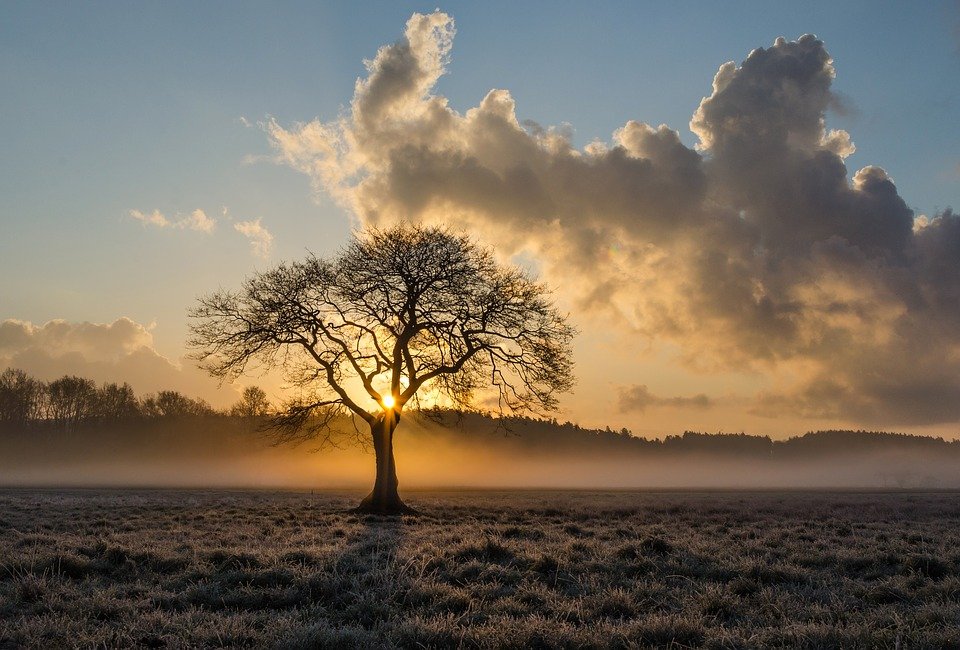I stole this title from a cool article I found today, unfortunately it's not about a super old Japanese, Greek or Italian individual, the subject in question doesn't even belong to the animal kingdom, but it's about plants. Talking about kingdoms I know plants do not usually fall into the realm of things we consider cool. From my previous experience on Steemit I noticed that all my plant posts were ignored by most users but hopefully I will find someone that shares my same interests. I know plants are not as cool as the Jesus Christ lizard that walks on water or like chickens that can play piano (apparently it's a thing) but plants have been around for a bit longer than us on our planet and during their existence they have accumulated a bunch of cool tricks in their evolutionary arsenal.

For instance, while we are able to move and seek more “friendly” habitats, plants have to cope with the environment they are in by adapting. In plants, like in mammals, oxygen is an indispensable substrate that fuels biochemical reactions. But, despite its importance, plants lack an active transport mechanism to distribute oxygen to all cells. Therefore, there are steep oxygen gradients within most plant tissues, which can be exacerbated by environmental perturbations that further reduce oxygen availability (e.g. roots cells can survive immersed in water for days when it rains). Nonetheless, plants can tune their metabolism to cope with energy crises induced by low oxygen, so some plant cells can survive even in anoxia (almost absence of oxygen) for prolonged periods of time. All this while harnessing the energy from the sun to convert the carbons in the air into sugars (Raven biology of plants). Pretty cool eh?!
Anyway, that’s not what I want to talk about today. There is another amazing feature that plants have, longevity. Plants in fact, can be quite crafty when it’s about defying aging and death. Like all of us, plants also seek to escape the grips of aging (Munné-Bosch, 2015). Studies found that aging and senescence are not the same for the plants(Jones et al., 2014), for instance, some plants hardly show signs of senescence (Baudisch et al., 2013).

How can this be? And what tricks do plants use to defy death?
There are no easy answers but let’s just say that plants abide by the same rules of life that dictate how and for how long we live. For example, there is a rule that says that aging cannot occur while there is growth(Munné-Bosch, 2015), all forms of life start becoming old only after they have served their purpose and stopped growing. So, what many plants do? They just keep growing indefinitely(Munné-Bosch, 2015).
If you have a molecular biology background I can imagine a smirk appearing on your face, you may say: “well, if plants keep growing, with all these cell divisions, they will surely accumulate tons of DNA mutations”. You can pat yourself in the back, I am not going to contradict you but…there was a group of scientists that had your same thoughts about DNA mutations so they just decided to pick an old tree and see how many DNA mutations they could find(Schmid-Siegert et al., 2017). They picked a tree currently in the campus of Lausanne University, it’s known as the Napoleon’s Oak because in the 1800, when the tree was only 22 years old, Napoleon and his troops stopped there on their way to invade Italy. The tree outlived Napoleon and at the time of the study it was 234 years old (there are several trees with the same name, to my knowledge there is one also in Poland, Napoleon must have loved Oak trees). The authors of the study sequenced the DNA from different branches of the tree expecting to find a huge amount of mutations, instead to their surprise there were extremely few mutations(Schmid-Siegert et al., 2017). The tree was accumulating mutations at a slower pace than even other common plants(Kuhlemeier, 2017).

Image showing all the sites from which the DNA of the Napoleon's Oak was sequenced, Image from reference (Schmid-Siegert et al., 2017)
How could this be possible?
In part this seems to be due to the modularity of the growth of the tree, the stem cells of the tree that will form a new branch are set aside fairly early during their divisions so that they are still relatively “fresh” when they will generate a new branch(Kuhlemeier, 2017). Moreover, there is another advantage in modularity, if a nasty mutation occurs in one portion of the plant, the whole compartment will be shut off from the rest of the plant and let rot. In other words, the plants are willing to sacrifice entire branches if that means survival for the rest of the plant. Plus, the tree will keep its most important cells well hidden for the perilous solar radiations, it will keep instead the “disposable” cells in the leaves and upper branches. So, if the radiations from the sunlight cause DNA damage in the disposable cells, the tree will just let them die.
But there is another trick up the plant’s sleeve or branch, that wasn’t discussed in those papers. I found out about it while reading other articles. As I mentioned before, the radiation from the sunlight may cause damage in the DNA, the cells are well equipped to repair these damages but they risk making a mistake during the DNA repair so we can have the insurgency of the so called "DNA mutations". If you live in a fantasy world these mutations may transform you into a super-hero, but in real life they will most likely lead to cancer. So what would be the most sensitive thing to do? Hide the DNA from the sunlight!

Image showing how light can trigger the movement of chloroplasts, from reference (WADA, 2016)
Studies have found that the plant’s nuclei and chloroplasts can actually move as a response to light (Wada, 2017; WADA, 2016). Especially the chloroplasts, will move towards light when this is weak, but they will shy away from strong light to prevent damage to the DNA.
Do you still think plants are not cool? It doesn’t matter, many trees will probably outlive us. You’d better find an Oak tree and name it after yourself!
References
- Baudisch, A., Salguero-Gómez, R., Jones, O. R., Wrycza, T., Mbeau-Ache, C., Franco, M., & Colchero, F. (2013). The pace and shape of senescence in angiosperms. Journal of Ecology, 101(3), 596–606. https://doi.org/10.1111/1365-2745.12084
- Jones, O. R., Scheuerlein, A., Salguero-Gómez, R., Camarda, C. G., Schaible, R., Casper, B. B., … Vaupel, J. W. (2014). Diversity of ageing across the tree of life. Nature, 505(7482), 169–73. Retrieved from http://www.ncbi.nlm.nih.gov/pubmed/24317695
- Kuhlemeier, C. (2017). How to get old without aging. Nature Plants, 3(12), 916–917. https://doi.org/10.1038/s41477-017-0076-7
- Munné-Bosch, S. (2015). Senescence: Is It Universal or Not? Trends in Plant Science, 20(11), 713–720. https://doi.org/10.1016/j.tplants.2015.07.009
- Schmid-Siegert, E., Sarkar, N., Iseli, C., Calderon, S., Gouhier-Darimont, C., Chrast, J., … Reymond, P. (2017). Low number of fixed somatic mutations in a long-lived oak tree. Nature Plants, 3(12), 926–929. https://doi.org/10.1038/s41477-017-0066-9
- Wada, M. (2017). Nuclear movement and positioning in plant cells. Seminars in Cell & Developmental Biology. https://doi.org/10.1016/j.semcdb.2017.10.001
- WADA, M. (2016). Chloroplast and nuclear photorelocation movements. Proceedings of the Japan Academy, Series B, 92(9), 387–411. https://doi.org/10.2183/pjab.92.387

